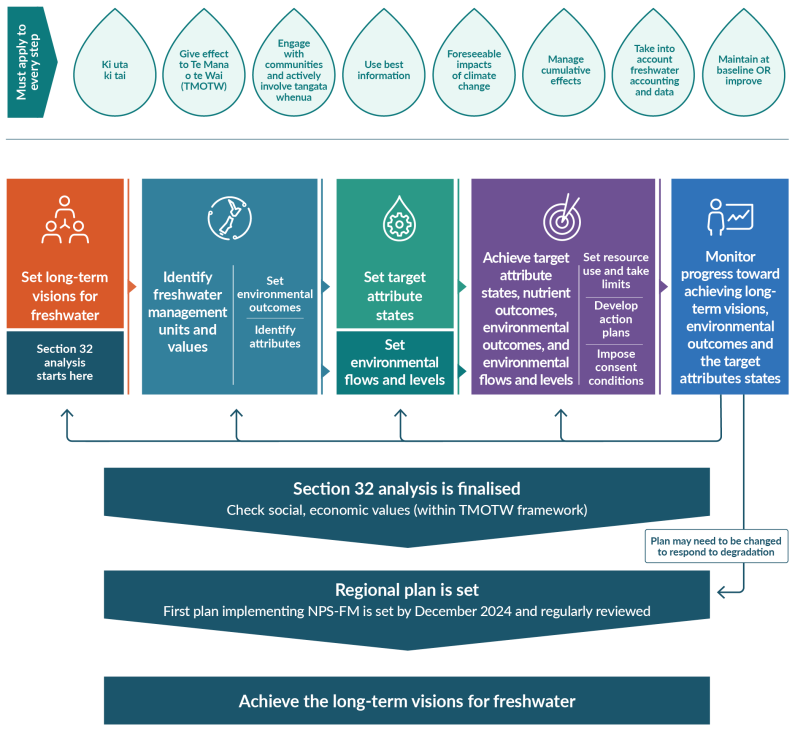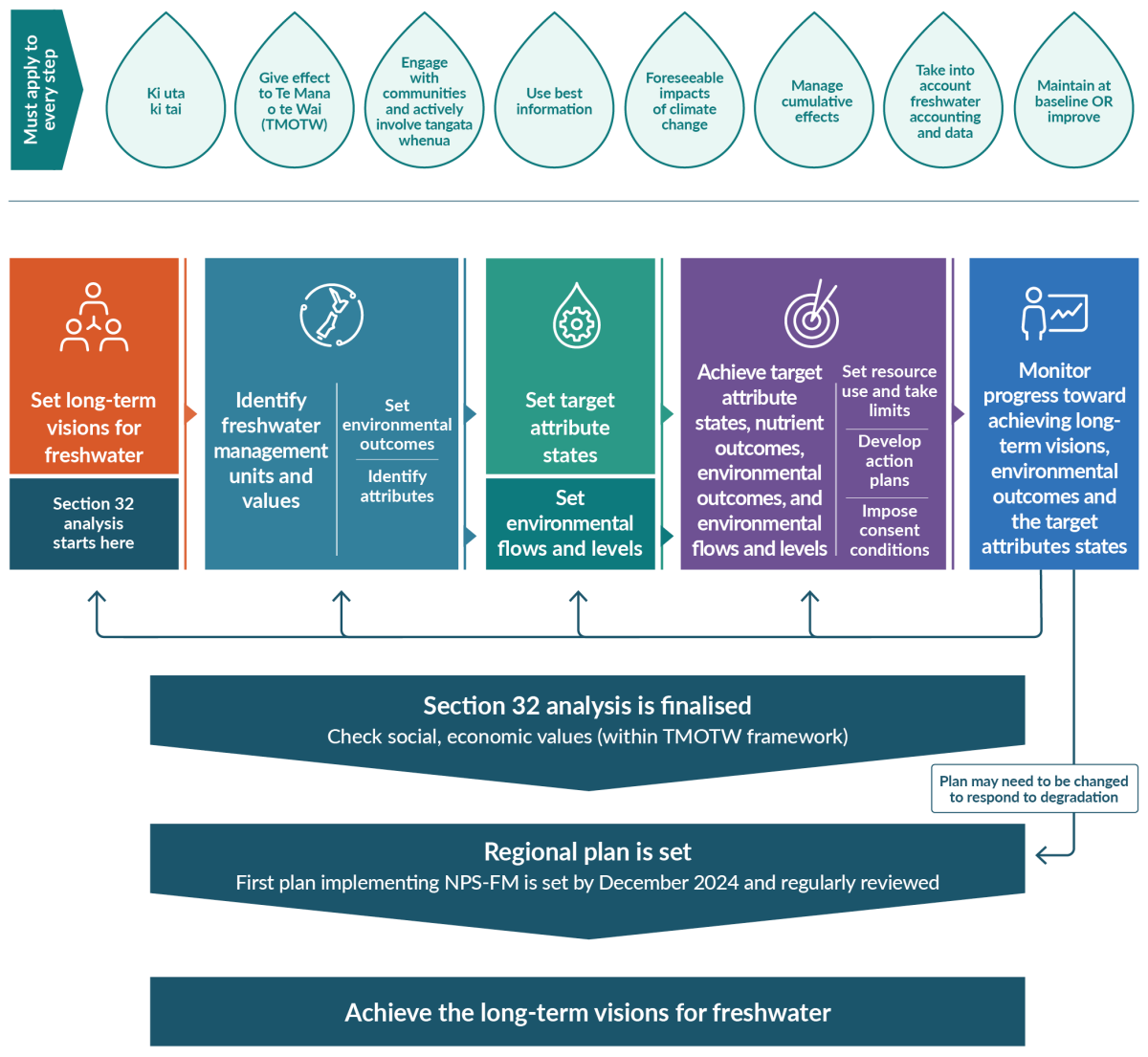The NOF within the NPS-FM

This guidance is intended for councils, tangata whenua and interested parties from communities.
Whereas the NPS-FM only directs councils – it clarifies their rights and roles, including their obligations towards others in the NPS-FM – the purpose of this guidance is to inform tangata whenua and other interested parties from the community of the extent of their rights to be involved in this process.
The remainder of this document provides guidance on subpart 2 of the NPS-FM, which sets out councils’ obligations to successfully implement the NOF. Each section that follows corresponds to a clause of subpart 2 of the NPS-FM.
Figure 2 shows a high-level overview of councils’ obligations when implementing the NOF and serves as a roadmap through the remainder of this guidance.

Infographic on the process to achieve the long-term visions for freshwater by working through the requirements of the National Objectives Frameworks.
Along top:
Matters that must apply to every step of the process
Diagram shows sequential process with five elements.
Two processes feed in sequentially.

Infographic on the process to achieve the long-term visions for freshwater by working through the requirements of the National Objectives Frameworks.
Along top:
Matters that must apply to every step of the process
Diagram shows sequential process with five elements.
Two processes feed in sequentially.

The NOF within the NPS-FM
July 2022
© Ministry for the Environment